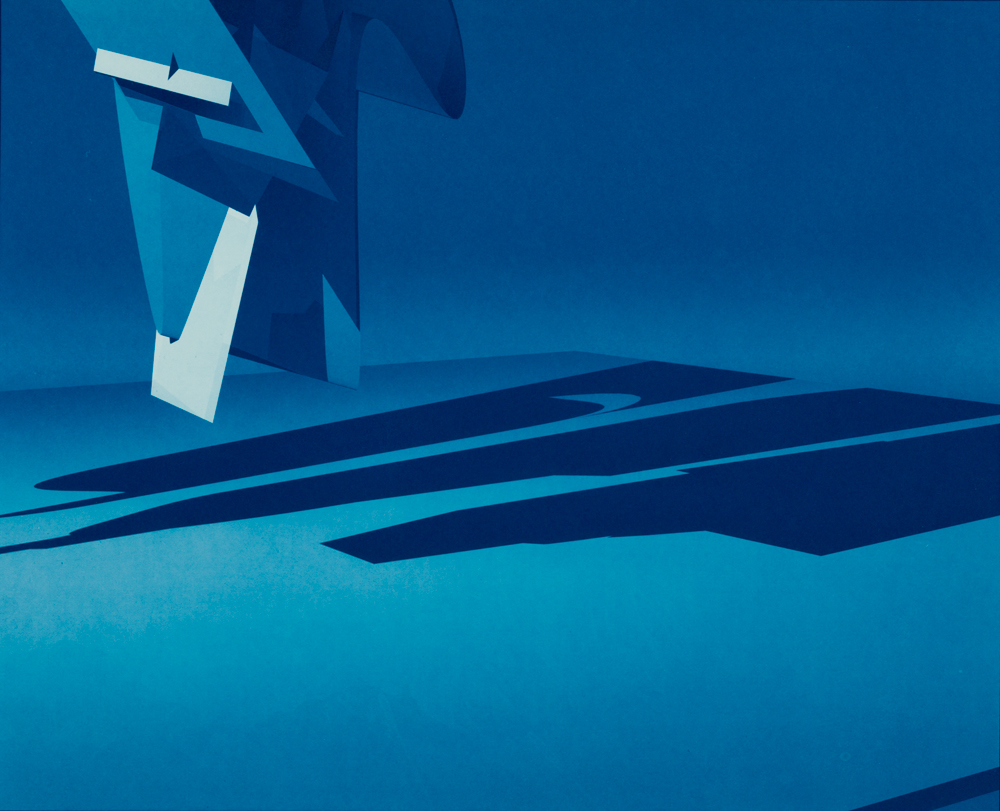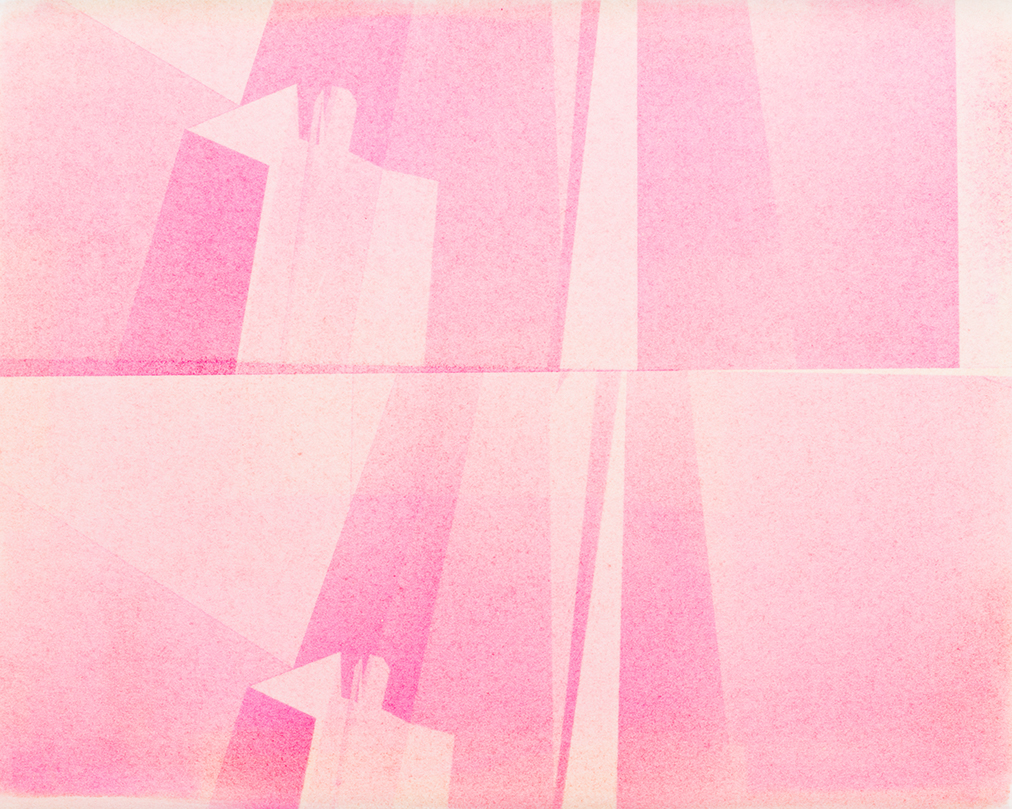Almost Or Nearly As Described
I began Almost Or Nearly As Described out of frustration. My photographic ritual had been to orient with a camera in a physical environment, choose a point of view and a moment to capture. I felt hindered by this routine so I began working virtually, using 3D software to create illusions of form and context. My computer driven approach relies on intentional errors, while success is measured by an internal gauge for inaccuracy. Virtual components are assembled in Photoshop, then made tangible with a selection of nineteenth-century printing techniques. Each process is chosen for its unique image standard and place within the photographic lineage.
Cyanotypes are one of the earliest photosensitive discoveries, presented to the world in 1842. The process creates a rich but limited range of Prussian Blue tones. Pioneering photographers bypassed the technique, instead it became the standard method of reproducing technical drawings, aka blueprints.
The anthotype process relies on a substrate of light sensitive plant extracts and uses ultraviolet light to bleach an image. The technique creates a low-fidelity representation that remains sensitive to light and completely fades in a matter of weeks, requiring a digital facsimile to make a permanent image.
The silver gelatin process was once the most common method of creating a black and white print. The technique relies on precious metals that are suspended on a paper’s surface. The printing procedure yields a lush, luminous image that is unlike, but emulated, by computer driven printers.
Each process is skewed by fickle chemistry, atmospheric conditions, and user error. Stains, dust spots, scratches, brush marks, and exposure variables are inevitable. Having been removed from a lifeless digital realm, each print is unique version of itself. Virtual reality shattered by alchemic magic.








